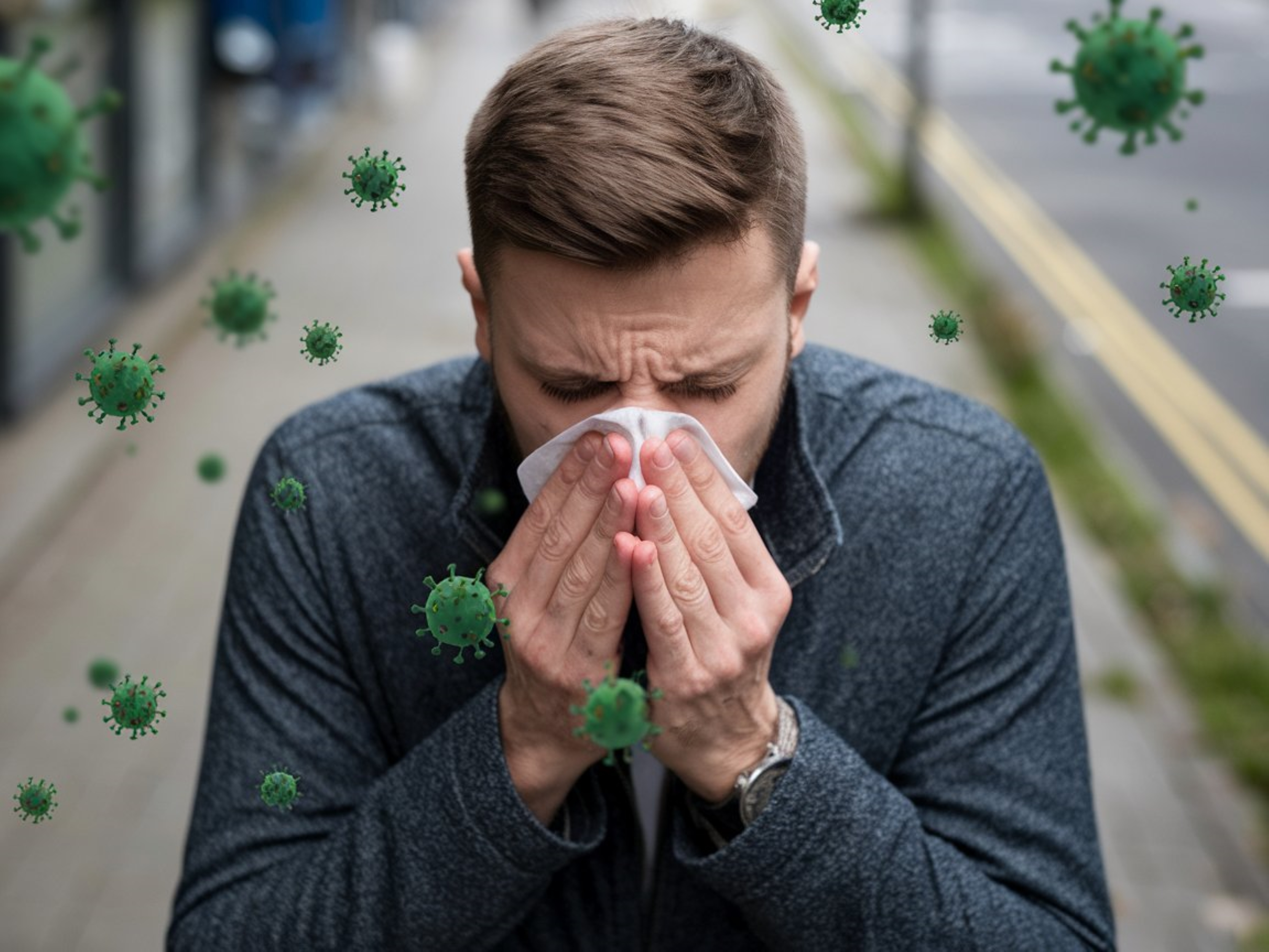Airborne Diseases: Common Types and Prevention
Airborne diseases are a silent threat that most of us often used to overlook. However, with the recent Covid-19 pandemic, most of us have become more conscious about the air we breathe.
These illnesses can spread easily through inhaling airborne pathogens (containing bacteria or viruses) transmitted by the infected individual, making them contagious and harder to control.
Whether through tiny respiratory droplets from sneezes or coughs or aerosolized particles of dust, they travel fast and infect large groups of people. Hence, understanding the most common airborne diseases and preventive measures can help protect you and your loved ones.
Keep reading to explore the top airborne diseases and what you can do to minimize the risk of exposure to ensure you and your loved ones are safe from them!
What is airborne transmission?
Airborne transmission refers to the spread of bacterial and viral infections through tiny particles or droplets that remain suspended in the air.
These particles can be inhaled by others, even after the infected person has left the area. It commonly occurs in enclosed or poorly ventilated spaces, making diseases like coronavirus, chickenpox, influenza, and tuberculosis easier to spread through the air.
Common airborne diseases
Many diseases are spread through the air, but here are the most common:
1. Influenza (Flu)
Influenza, more commonly known as flu, is a highly contagious viral infection that affects the respiratory system, especially during the flu season. The most common symptoms include fever, body aches, cough, sore throat, aching body, headache, difficulty sleeping, and loss of appetite.
Related Read: All You Need to Know About Flu and Cold Prevention
2. Common cold
The common cold is a mild infection that primarily affects the upper respiratory tract and can be caused by any of more than 200 different viruses. However, rhinoviruses are usually the most common culprit behind this airborne disease.
Some of the most common cold symptoms include a runny nose, scratchy, tickly, sore throat, sneezing, watery eyes, and cough. While it’s usually harmless, it can still be highly contagious.
Related Read: Remedies and Recommendations for Cold
3. Tuberculosis (TB)
Tuberculosis is a bacterial infection that primarily affects the lungs. However, it doesn’t spread easily, and generally, you have to be in close contact with the affected individual.
Some of the most common tuberculosis symptoms include persistent cough, high temperature or night sweats, weight loss, and loss of appetite.
4. Measles
Measles is a highly contagious viral infection, particularly in crowded conditions. It spreads through coughing or sneezing and can be prevented with the MMR vaccine.
Its characteristics include red, blotchy rash, fever, severe cough, tiredness, conjunctivitis, runny nose, and complications that can include pneumonia and encephalitis.
5. Covid-19
Covid-19 has been responsible for millions of infections and hundreds of thousands of deaths globally since 2020. It spreads through respiratory droplets or aerosols when an infected person talks, coughs, or sneezes.
Common symptoms of Covid-19 include fever, cough, shortness of breath or difficulty breathing, sore throat, congestion, new loss of taste or smell, fatigue, and body aches.
What you can do to prevent the spreading of an airborne disease
Although it’s impossible to avoid airborne pathogens completely, there are some things you can do to lower your chances of getting sick:
- Wash your hands regularly with Antibacterial soap or Liquid hand wash to reduce the spread of germs, bacteria, and viruses that cause respiratory infections.
- Take regular showers or baths with Antibacterial body wash to maintain overall hygiene, reduce allergens on your skin, and keep you feeling refreshed and nourished.
- Use Dettol hand sanitizer frequently, especially after traveling and touching surfaces in public places, to protect yourself against 99.9% of germs while leaving your hands feeling refreshed and non-sticky.
- Keep your bedroom air moist with a humidifier to prevent dry throat and nasal passages, and regularly use Dettol Neutra Air to eliminate the bacteria from the environment.
- Cover your mouth when you cough or sneeze. Use a tissue or your elbow to cut down on the possibility of transmitting germs on your hands.
- Avoid close contact with people who have active symptoms of the disease. Plus, stay home when you’re sick. Don’t let vulnerable people (people with weak immune systems, such as old age people and kids) come in close contact with you.
FAQs
How does wearing a mask help prevent airborne diseases?
Generally, masks help filter out respiratory droplets, reducing the number of germs you breathe in or out. However, their effectiveness can vary against different viruses based on the size of the virus.
Is vaccination effective in preventing airborne diseases?
Vaccines, like the flu shot or the COVID-19 vaccine, can reduce the risk of contracting and spreading airborne diseases, but the protection is never perfect.
What role does ventilation play in preventing airborne diseases?
Proper ventilation helps disperse and dilute viral particles, reducing the concentration of airborne pathogens in enclosed spaces.
